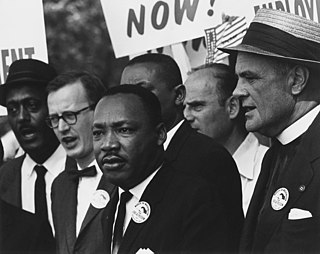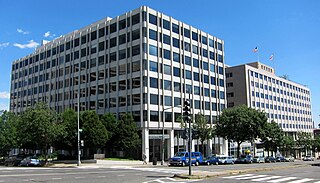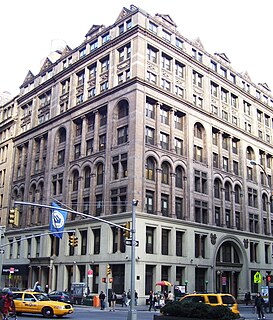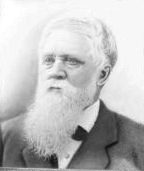
In politics, humanitarian aid, and social science, hunger is a condition in which a person, for a sustained period, is unable to eat sufficient food to meet basic nutritional needs. So in the field of hunger relief, the term hunger is used in a sense that goes beyond the common desire for food that all humans experience.
Philanthropy means the love of humanity. A conventional modern definition is "private initiatives, for the public good, focusing on quality of life", which combines an original humanistic tradition with a social scientific aspect developed in the 20th century. The definition also serves to contrast philanthropy with business endeavors, which are private initiatives for private good, e.g., focusing on material gain, and with government endeavors, which are public initiatives for public good, e.g., focusing on provision of public services. A person who practices philanthropy is called a philanthropist.

A soup kitchen, meal center, or food kitchen is a place where food is offered to the hungry usually for free or sometimes at a below-market price. Frequently located in lower-income neighborhoods, soup kitchens are often staffed by volunteer organizations, such as church or community groups. Soup kitchens sometimes obtain food from a food bank for free or at a low price, because they are considered a charity, which makes it easier for them to feed the many people who require their services.

A charitable organization or charity is a non-profit organization (NPO) whose primary objectives are philanthropy and social well-being.
The Charity Organization Societies were founded in England in 1869 following the 'Goschen Minute' that sought to severely restrict outdoor relief distributed by the Poor Law Guardians. In the early 1870s a handful of local societies were formed with the intention of restricting the distribution of outdoor relief to the elderly
The settlement movement was a reformist social movement that began in the 1880s and peaked around the 1920s in England and the United States. Its goal was to bring the rich and the poor of society together in both physical proximity and social interconnectedness. Its main object was the establishment of "settlement houses" in poor urban areas, in which volunteer middle-class "settlement workers" would live, hoping to share knowledge and culture with, and alleviate the poverty of, their low-income neighbours. The settlement houses provided services such as daycare, education, and healthcare to improve the lives of the poor in these areas.
The history of Jews in St Louis goes back to at least 1807. St. Louis has the largest Jewish population in Missouri and is the largest urban area in the state of Missouri. Today's Jewish community is primarily composed of the descendants of Jews who immigrated from Germany in the first few decades of the 19th century, as well as Jews who came from Eastern Europe slightly later.
Food For The Poor, Inc. (FFP) is an ecumenical Christian nonprofit organization based in Coconut Creek, Florida, United States that provides food, medicine, and shelter, among other services, to the poor in Latin America and the Caribbean.
Muslim Aid is a UK based Islamic charity NGO. It was originally run by former senior staff of the Muslim Council of Britain, and is now run by a new board of seven members which took office early 2018 and is chaired by independent management consultant Iftikhar Awan, a former trustee of Islamic Relief. It is a member of the Muslim Charities Forum, an umbrella organisation for UK based Muslim-led charities whose primary goal is to provide humanitarian aid and assistance to the poorest and most vulnerable people around the world and is also an associate member of Bond, the UK membership body for non-governmental organisations and a member of NCVO, National Council for Voluntary Organisations, an organisation with 11,000 members that champions the voluntary sector and volunteering.

Catholic Charities is a network of charities with headquarters in Alexandria, Virginia. In 2005 Forbes magazine ranked it as the fifth largest charity in the United States in terms of total revenue. The organization serves millions of people a year, regardless of their religious, social, or economic backgrounds
Family and Children's Services of Central Maryland (FCS) is a private, nonsectarian social services agency that was founded in 1849. FCS addresses issues from birth through the end of life with a goal of helping each individual reach his or her highest potential. FCS is a 501(c)(3) non-profit organization.
Social work has its roots in the attempts of society at large to deal with the problem of poverty and inequality. Social work is intricately linked with the idea of charity work; but must be understood in broader terms. The concept of charity goes back to ancient times, and the practice of providing for the poor has roots in all major world religions,

Army Emergency Relief (AER), often referred to by the longer title Army Emergency Relief Fund, is a non-profit, charitable organization independent of, but closely associated with the United States Army, founded in 1942. The organization is headquartered in Arlington, VA.
The National Legal Aid & Defender Association (NLADA) is the oldest and largest national, nonprofit membership organization devoted to advocating equal justice for all Americans and was established in 1911.

China Foundation for Poverty Alleviation (CFPA) is a nongovernmental charitable organization in Beijing, China, registered under the Chinese Ministry of Civil Affairs in 1989 and professionally supervised by the State Council Leading Group Office of Poverty Alleviation and Development.

Philanthropy has played a major role in American history, from the Puritans of early Massachusetts who founded Harvard College, down to the present day. Since the late 19th century philanthropy has been a major source of income for religion, medicine and health care, fine arts and performing arts, as well as educational institutions.
Catholic charities refer to a number of Catholic charitable organisations. It is alleged that over 1,000 groups are loosely affiliated with Catholic charities.
BAPS Charities is an international non-religious, charitable organization that originated from the Bochasanwasi Akshar Purushottam Swaminarayan Sanstha (BAPS) with a focus on serving society. Their history of service activities can be traced back to Swaminarayan (1781-1830), who opened alms houses, built shelters, worked against addiction, and abolished the practice of sati and female infanticide with the goals of removing suffering and effecting positive social change. This focus on service to society is stated in the organization's vision, that "every individual deserves the right to a peaceful, dignified, and healthy way of life. And by improving the quality of life of the individual, we are bettering families, communities, our world, and our future." BAPS Charities carries out this vision through a range of programs addressing health, education, the environment, and natural disaster recovery. The organization's worldwide activities are funded through donations and are led by a community of over 55,000 volunteers who are mostly members of BAPS. The volunteers work with local communities and other charities and the organization's activities are mainly based out of their mandirs.











